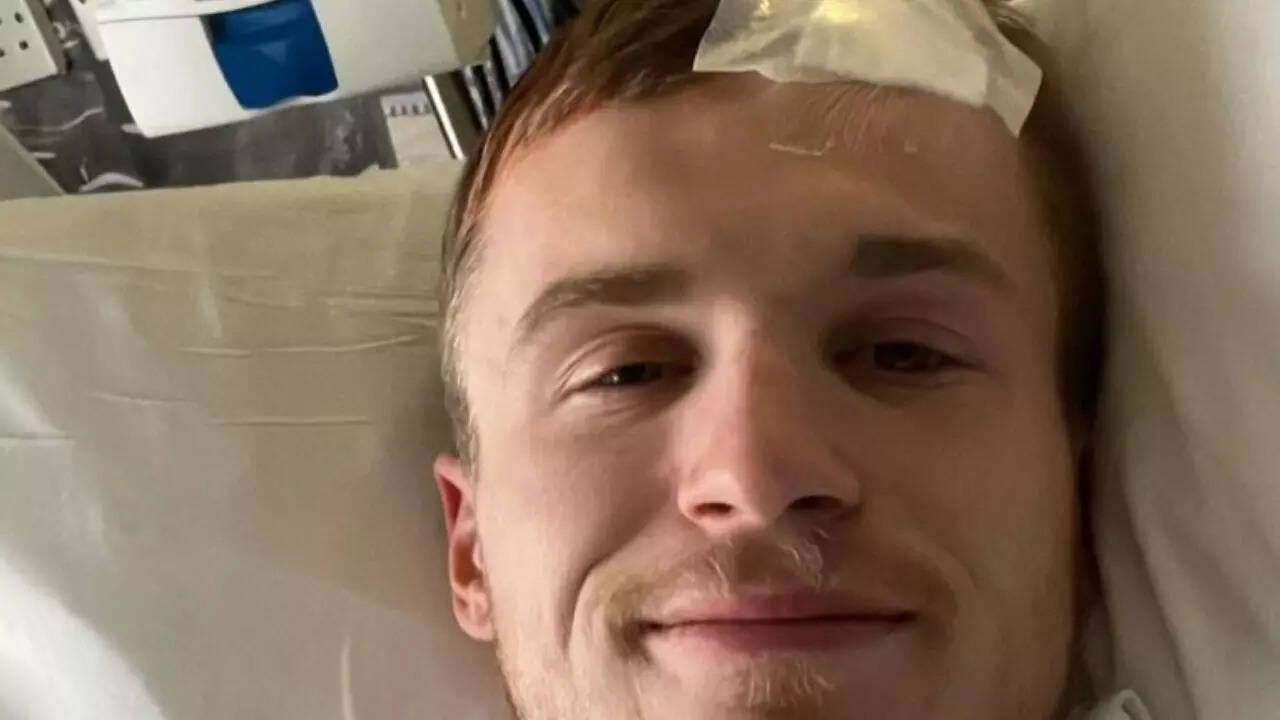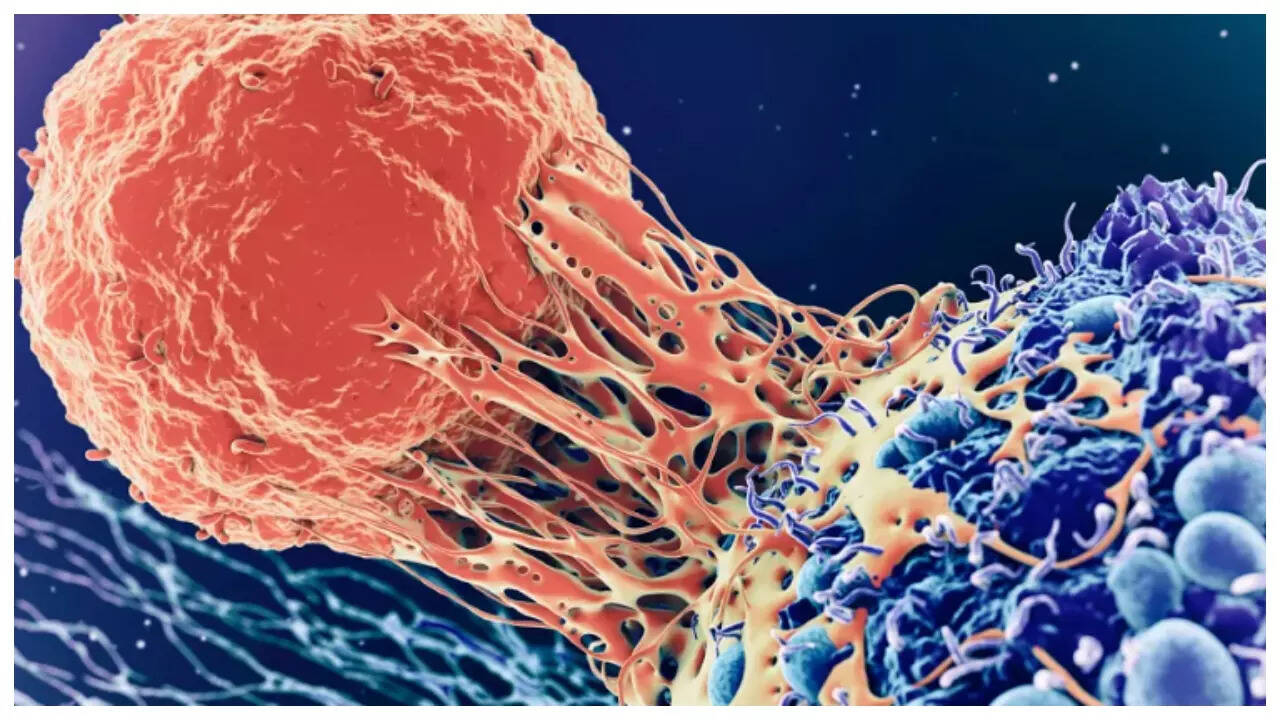What began as a simple case of suspected flu turned into a life-altering diagnosis for 26-year-old triathlete Kieran Shingler from Warrington, England. Initially experiencing what seemed like routine cold symptoms: a sore throat, runny nose, and persistent headache where Kieran believed he had seasonal flu or Covid-19. However, within weeks, his health rapidly deteriorated, leading to shocking medical discoveries. Doctors revealed he had an aggressive Grade 3 astrocytoma, a fast-growing malignant brain tumour, and gave him just one year to live. His journey highlights how easily life-threatening conditions can mimic common illnesses, delaying treatment.
How brain tumour symptoms mistaken for flu and covid-19
On Bonfire Night 2022, Kieran experienced mild symptoms: a sore throat, a runny nose, and a nagging headache. Like millions during that period, he suspected Covid-19 and tested himself multiple times. When all tests came back negative, he and his girlfriend, Abbie Henstock, assumed it was the flu. But this “flu” never went away. As reported, in the weeks that followed, Kieran’s condition deteriorated rapidly. He became fatigued, struggled to keep food down, and developed excruciating headaches—pain that was unusual even for flu or migraines.
“He was so fit—doing triathlons, working out almost every day—and then he suddenly couldn’t even eat without being sick. We knew something was seriously wrong,” Abbie recalled. Two weeks after his symptoms started, Kieran’s late mother, Lisa, noticed how badly he was struggling and contacted their family GP. Concerned about possible meningitis, the GP referred him to Warrington Hospital.At the hospital, doctors ran tests and performed a CT scan, which revealed a shocking discovery: there was a mass on Kieran’s brain. He was immediately blue-lighted to The Walton Centre in Liverpool, a specialist neurology facility.

Source: SWNS
Multiple surgeries and MRI scans uncover fast-growing malignant brain tumour
At The Walton Centre, an MRI scan confirmed a tumour was obstructing the flow of cerebrospinal fluid, which helps protect the brain and spinal cord. This blockage was causing dangerous intracranial pressure that could have proved fatal if not treated immediately.Doctors explained that surgery was necessary—not just to treat the tumour but also to relieve the fluid build-up in Kieran’s brain.
- First surgery: Emergency procedure to relieve pressure
Kieran underwent an Endoscopic Third Ventriculostomy (ETV), a minimally invasive surgery designed to create a new pathway for fluid circulation and reduce pressure inside the brain. Initially, the surgery worked, and Kieran began to feel better. But this was only the start of a complex medical journey, as the tumour itself still needed to be addressed.

- Second surgery: Removing the tumour and biopsy
A few weeks later, doctors performed a craniotomy to remove as much of the tumour as safely possible and take samples for biopsy. While this surgery succeeded in reducing tumour size, it left Kieran with short-term memory loss, a common side effect when operating on critical brain regions. In December 2022, just one hour before his third surgery (to insert an external shunt after the ETV failed), doctors revealed the devastating biopsy results: Grade 3 Astrocytoma—a fast-growing, malignant brain tumour.
What is a Grade 3 Astrocytoma
Astrocytomas develop from astrocytes, star-shaped brain cells that support nerve function. Grade 3 tumours are:
- Aggressive and fast-growing, making them more difficult to treat
- Infiltrative, meaning they spread into nearby brain tissue
- Known to cause headaches, vision changes, cognitive impairment, speech issues, and seizures
These tumours often require multimodal treatment—surgery followed by radiotherapy and chemotherapy—but even then, they have a high recurrence rate. Doctors explained to Kieran’s family that such tumours are rarely curable and, in his case, he likely had only 12 months to live. To shield him from extra distress during the holidays, his family waited until after Christmas to tell him. “When I was finally told, I was scared and angry. I kept asking: why me?” Kieran said.
Radiotherapy brings hope as tumour reduces to 0.35 cm without ongoing treatment
In January 2023, Kieran began 30 sessions of radiotherapy alongside chemotherapy at The Clatterbridge Cancer Centre. This approach aimed to kill remaining tumour cells and slow its growth. The initial results were promising. By February 2023, MRI scans revealed the tumour was shrinking—a rare moment of relief for Kieran and Abbie amid months of uncertainty and fear. Unfortunately, by mid-2023, the tumour became resistant to the treatment and began growing again. Doctors switched to lomustine chemotherapy, which successfully reduced the tumour but caused liver damage, forcing doctors to stop treatment.Surprisingly, even without active treatment, Kieran’s tumour continued shrinking for 19 months, reducing from 5.5 cm to just 0.35 cm—an almost miraculous development.
Brain tumour returns in 2025 as Kieran turns to fundraising and alternative therapies
The respite didn’t last. In June 2025, a routine MRI revealed that the tumour was growing again. After years of fighting, three surgeries, multiple rounds of radiotherapy and chemotherapy, and temporary recovery, Kieran was once again facing the grim reality of a recurring, aggressive brain cancer. Determined to turn pain into purpose, Kieran and Abbie launched Kieran’s Krew, an online fundraising campaign. Initially intended to support brain cancer charities, it soon grew into a community-driven movement funding alternative therapies like:
- Oxygen therapy, which may improve cellular healing
- Red-light therapy, which some studies suggest could reduce inflammation
To date, over £57,000 has been raised to support brain tumour charities and provide Kieran with therapies that improve his quality of life.“At every scan, we hoped for good news. Even when it was shrinking, we knew it could change at any time. Now we want to use our journey to help others,” Abbie explained. The brain tumour diagnosis profoundly changed Kieran’s life. Short-term memory loss, chronic pain, hospital visits, and emotional distress became part of daily life. Yet, Kieran remained determined to focus on positive moments, supported by family, friends, and the broader community that rallied around him.Also Read | 5 Ayurvedic habits to naturally heal and strengthen your liver function






